Contents
- 1 What are Self-Powering Generators?
- 2 How Self-Powering Generators Work
- 3 How to Make a Self-Powering Generator
- 4 Other Related Projects
- 5 Relationship Between Nano Energy and Self-Powered Generator
- 6 Self-powered gas sensing with Nanogenerators
- 7 Functions of Self-Powering Generators
- 8 FAQs for Self-Powering Generators
- 9 Conclusion
What are Self-Powering Generators?
Self-powering generators are electrical devices that work by producing a consistent electrical output power. Often, the magnitude of the output power production supersedes the input power supply. Then, unlike other generators, it works under the principle of connecting an electric motor and alternator to produce an electric current automatically. It does so without using any fuel.
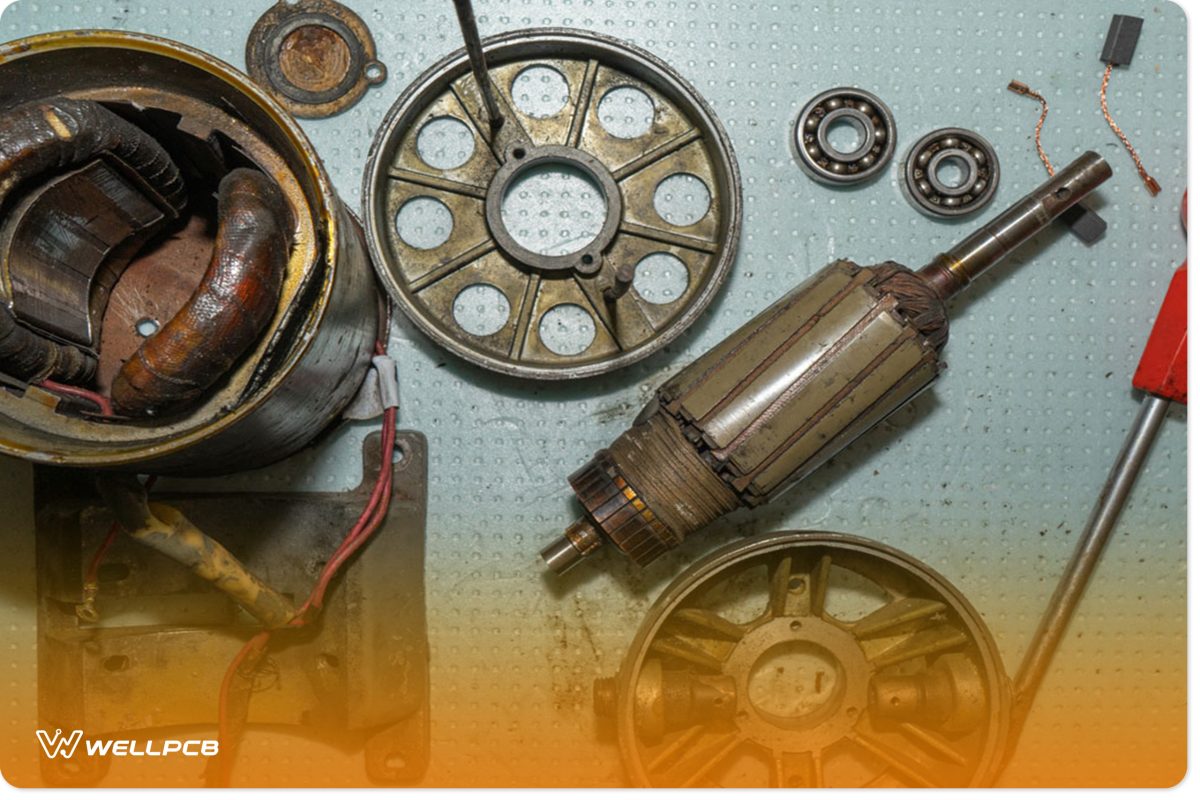
(parts of an electric motor).
How Self-Powering Generators Work
Three crucial things sum up how the self-powering generator operates. They include the electric motor, alternator, and working principle (as mentioned in the definition).
Below are the practical steps by which the generator works;
- Firstly, a brushless motor receives battery power and power from an electronic speed controller (ESC). Mostly, the motor turns on about 3000 and 5000 rpm on drag.
- Then, the brushless motor will drive the AC motor to generate both DC and AC forms of power.
- To power, the brushless motor, the DC power output undergoes rectification and passes through a capacitor battery afterward. Also, the step helps in stopping the voltage infrequencies that commonly appear from the AC motor and the brushless motor speed infrequencies.
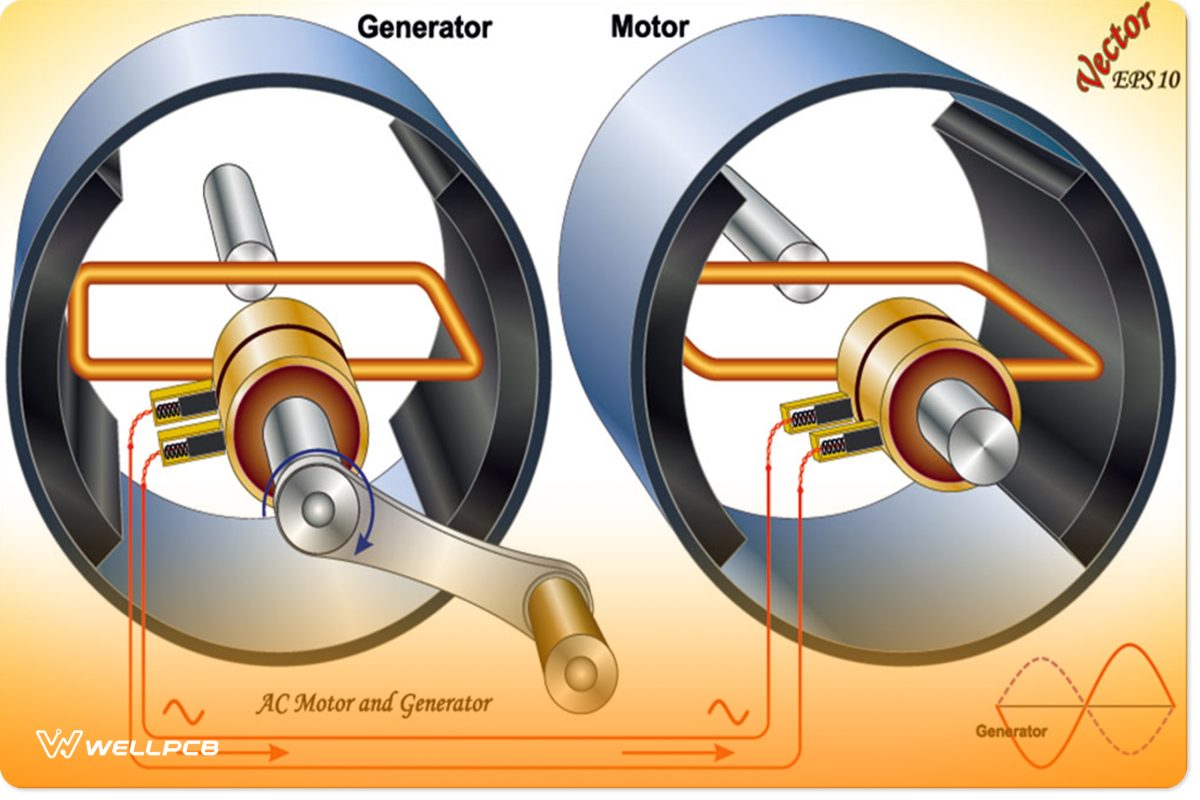
AC motor and generator
- Fourthly, the generator’s control system will control the AC and DC input voltage and the power grid’s load.
- The LCD will then show the battery percentage, run time, and voltage. The buttons here set the voltage and run time as per your instructions.
- You can also use an automatic switch to change the voltage from your recent battery to a capacitor battery. Then, you recharge the battery not in use at the moment.
- Finally, an Arduino board will help in checking the brushless motor’s temperature.
How to Make a Self-Powering Generator
Generally, different parts of a generator work to produce a wholesome effect that helps run the machines. Some of them include:
Rotor
It is part of the electric motor that aids in movement. Mostly, it does this by using its current-carrying conductors to interact with the stator, eventually producing mechanical energy.
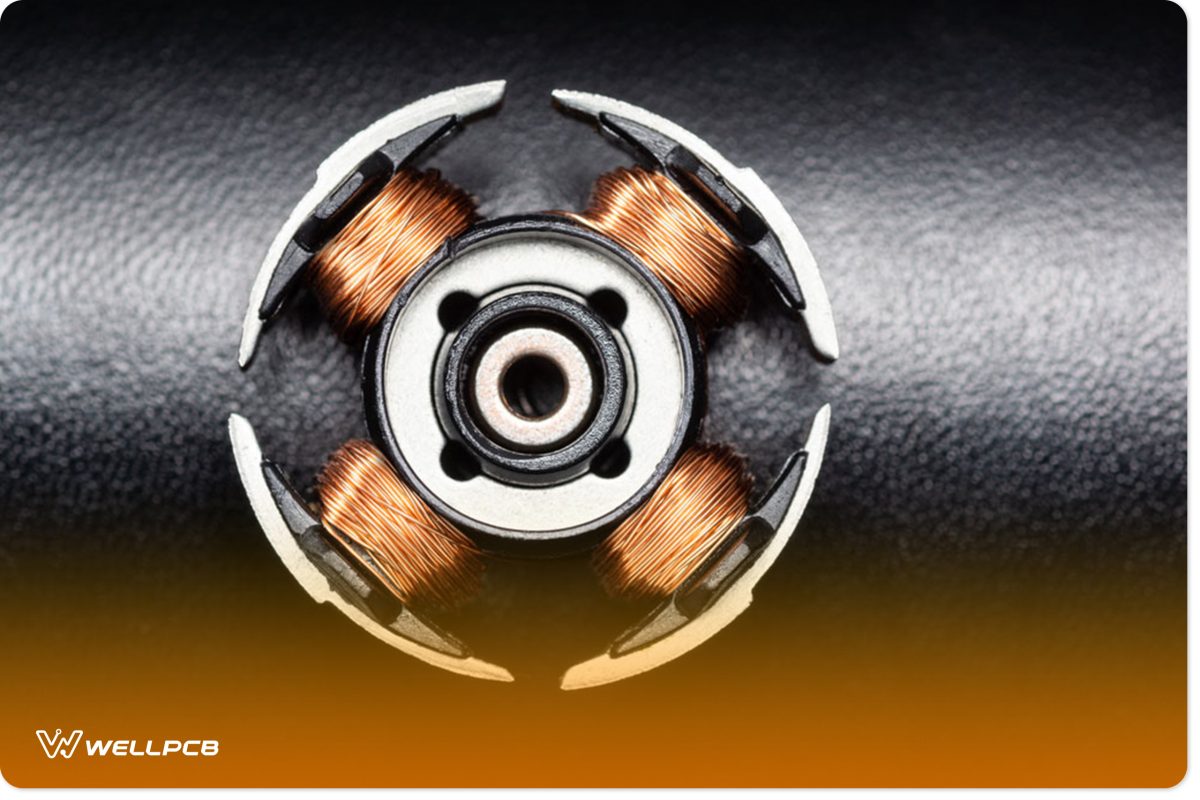
a DC motor rotor).
Bearing
It provides mechanical support to the rotor to stay on a specific axis during rotation. Then again, the bearing gets steady support from the motor housing that steadily holds it in place.
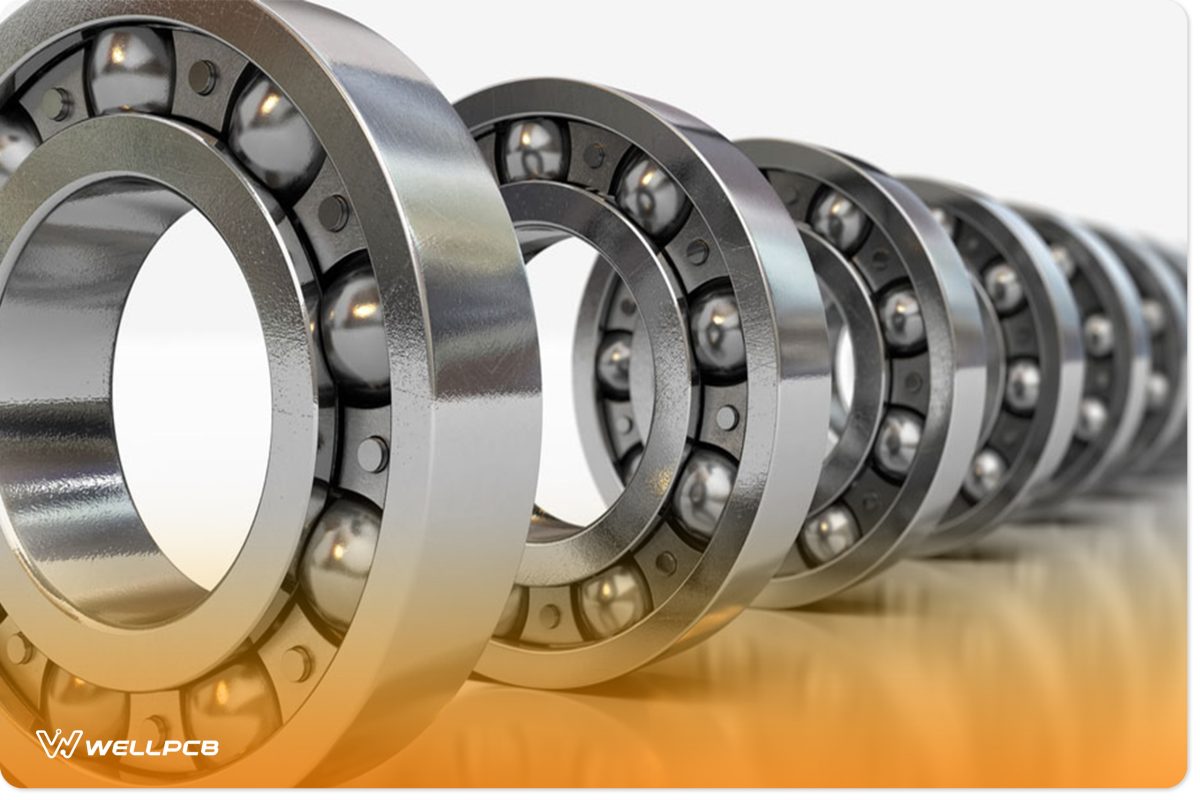
A picture of bearings).
Stator
It has one of the two components – a permanent or a winding magnet. Consequently, the component(s) maintains a stationary state. Additionally, the core has laminations, which are thin metal sheets.
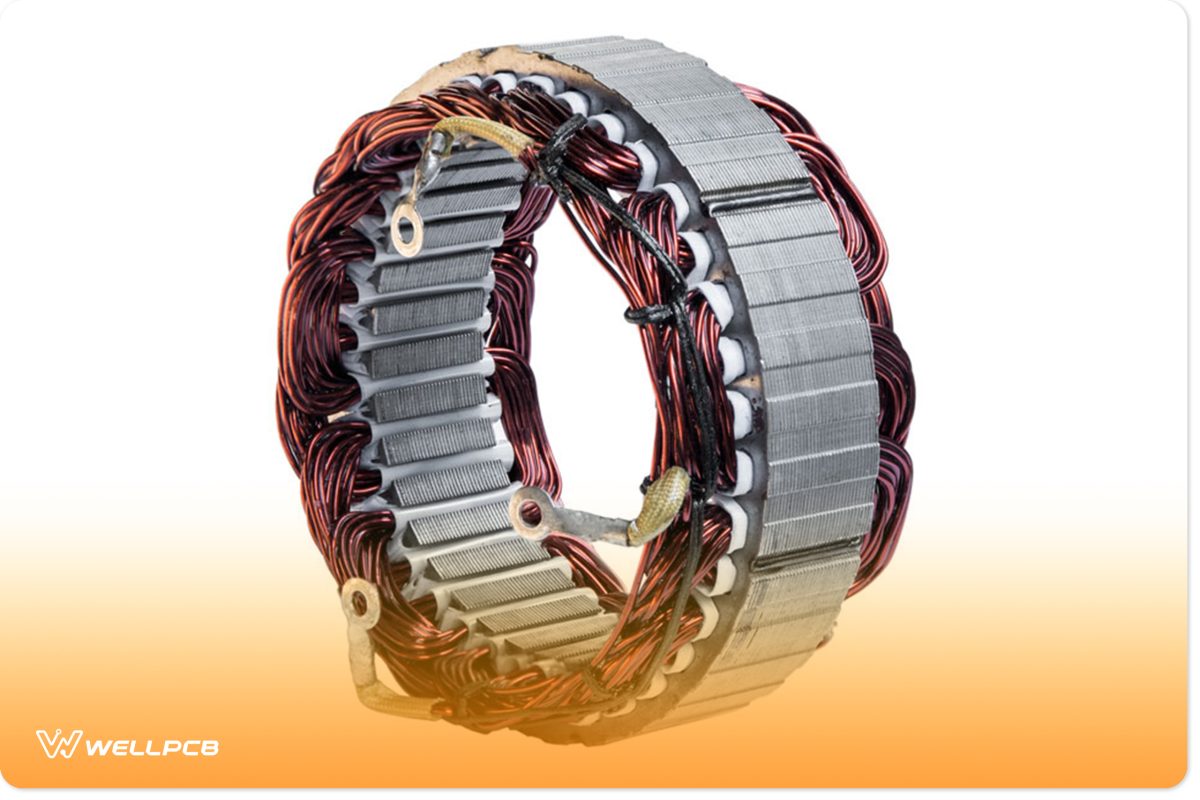
An alternator starter).
Air Gap
It is the space between the stator and rotor. At all times, the air gap space should be small. Since more significant air gaps negatively impact the motor’s performance.
Windings
Refers to wires that in coil appearances wrapped around a magnetic core made up of iron—the windings’ arrangement aids in forming magnetic poles for the passage of electric currents.
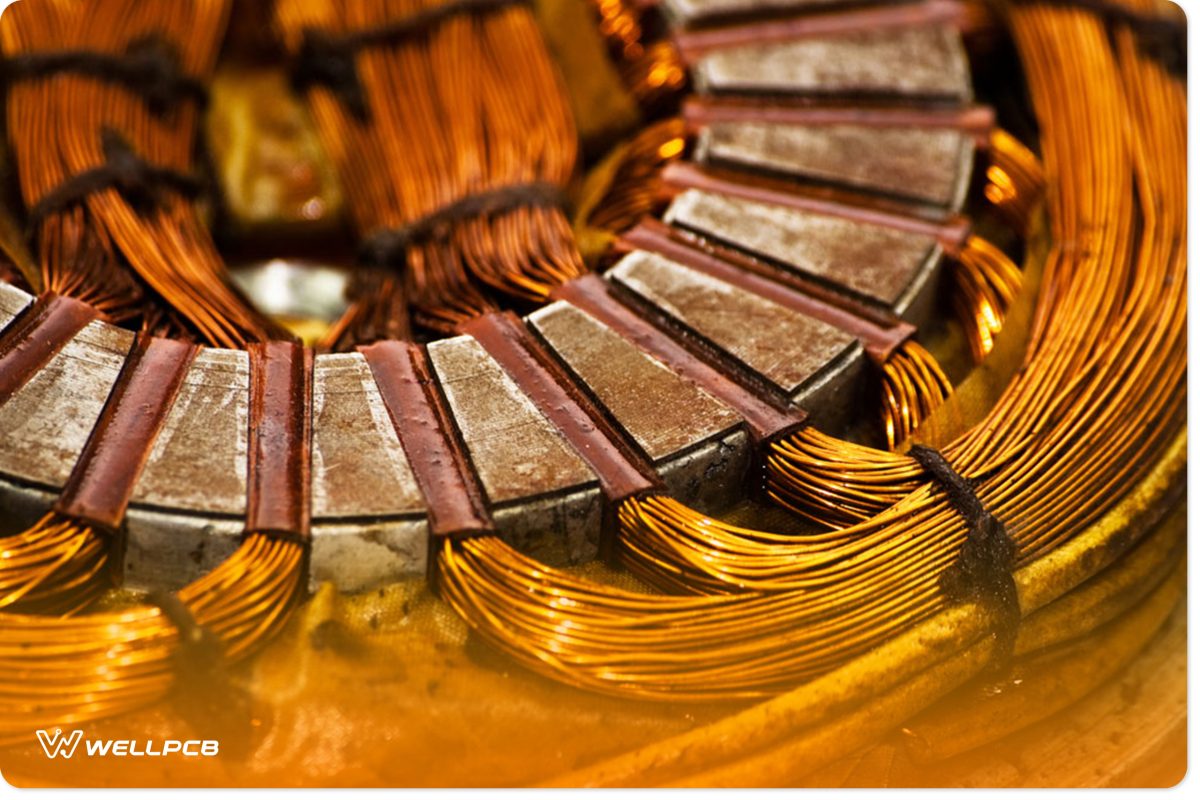
(windings in a machine)
Commutator
The last component, a commutator, forms a crucial part of the generator. Without it, the motor won’t run. It works by bringing about the reversals of currents and then applying the power to the machine optimally. Technically, it’s a mechanism that results in a switch input of AC and DC machines. Further, the DC and AC machines have slip ring segments with insulations from each other. Not forgetting the electric motor shaft.
The steps for making the self-powering generator are as follows:
- First, you’ll use a pulley that connects the electric rotor and alternator, therefore contributing to mechanical energy flow from the electric motor to the generator.
Note
a rotor should have fewer watts. The lesser the watts, the higher the chances of generating more output power for external use. Higher watts consume the generator’s power output, hence low power for external utilities.
- Then, connect the electric rotor to a battery via a power regulator. The reason for doing this is to help in the regulation of the speed motor. You can even use the regulator that turns on a knob in a ceiling fan.
- With the battery in place, you’ll be able to start up the generator. It enables the system to receive the initial energy for gradual energy build-up in the generator.
- Fourthly, you’ll make a back connection from the electric generator’s output. It allows for back production because of the electric motor through the regulator (for speed regulation of the electric motor).
- Later on, when the system gets fully powered, you can remove the initial starting power for the generator to continue running itself. Therefore, the end product results in an electric generator producing power for an electric motor while generating an output power for usage.
Summary:
The total power produced – Power used by rotor = Net Output
Other Related Projects
On one of his numerous technological inputs, Sir Howard Johnson introduced a method involving cutting down electric bills by passing only a minimal amount of voltage through a system. Subsequently, one can increase the voltage by using the connected alternators.
Practically speaking, if you pass a voltage as low as 10V through a system, you can generate up to 14000V. In turn, there are fewer electric bills for an easy build.
Relationship Between Nano Energy and Self-Powered Generator
Over the years, there has been a need to eradicate issues of unsustainable power supplies. It has been through finding different power sources as a substitute or innovating batteries. Technologists have done this by using nanogenerators to generate nanoenergy. They do so by filling the energy environment with energy harvested from the environment. For instance, they can use temperature gradients or solar radiation.
Then, they’ll convert the ambient and chemical energy to electrical energy through effects, notably, the photoelectric, piezoelectric, and triboelectric effects. Afterward, they apply the nano energy in portable electronics making them self-powered.
The nanogenerators emit energy like a self-powered generator environment, which is safe for humans since they don’t use fuel. Also, the experimental setup in nano energy can use the output energy directly (much like a self-powered generator) or indirectly through some intermediate steps.
Self-powered gas sensing with Nanogenerators
In this section, we’ll delve deeper into nanogenerators and their importance in self-powered electronics.
Self-powered sensing networks are to develop in the coming years in technological industries globally. Hence, the self-powered system should be sustainable, have wireless connections, and be multi-functional. The three are features in running devices such as low-power wearable electronics, self-powered electronics, and self-powered active sensors.
Therefore, for large-scale nano-energy production, there has been the development of self-powered sensors that depend on environmental energy. In other words, the sources of energy will be through harvesting technologies involving powering units, for instance, the solar cell. Technologists will then use the solar cell alongside a specific nanodevice. Notably, all this is to be carried out without external power sources or batteries, thus expanding the scope of the self-powered nano-systems.
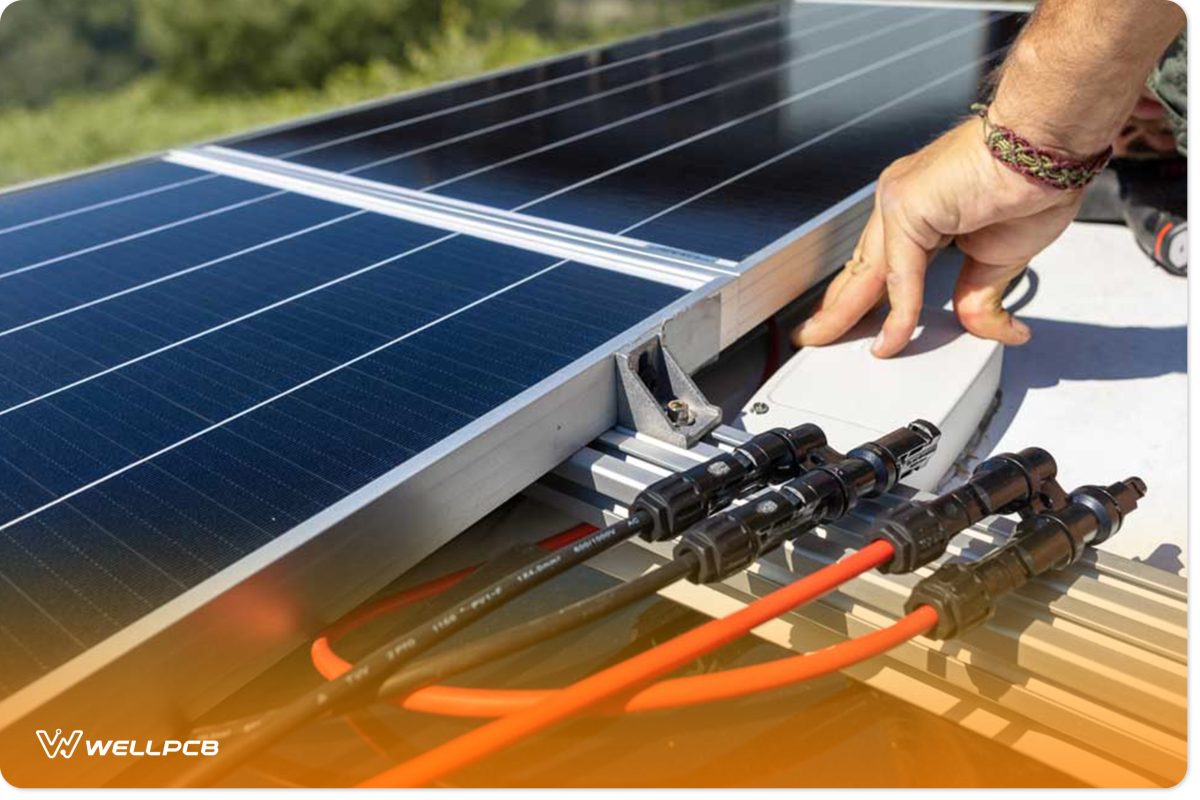
using solar energy.
The Origin of Nanogenerators
However, as time went by, the nano-system experimental setup had a couple of challenges. For instance, solar energy was unpredictable and there was also a need for heavy-weighted electromagnetic generators. Additionally, the wearable thermoelectric devices that existed showed a reduction in thermoelectric conversion proficiency. It is because of the parasitic heat loss in high-thermal-impedance polymer substrates. Also, there was poor thermal contact arising from rigid interconnects.
Therefore, the challenges made Zhong Lin Wang and his team introduce a piezoelectric nanogenerator (PENG) in the year 2006. PENG functions to convert environmental biomechanical energy to electric energy using piezoelectric zinc oxide nanowires (ZnO NWs).
Later in 2012, Z.L. Wang’s team introduced another generator, the triboelectric nanogenerator (TENG). A triboelectric generator combines electrostatic conduction with triboelectrification to yield a higher energy output. Then, it utilizes available materials more readily. PENG and triboelectric nanogenerators are thermoelectric generators that don’t use an additional power supply.
In recent years, Wang has used the Maxwell Equation to explain the fundamental theory of nanogenerators (NGs). In that, NGs can convert mechanical energy into electricity. But again, when analyzing the output signals, you can also retrieve some information on the input.
Generally, there has been an improvement and progress in potentially using NG-based self-powered gas sensing systems. Hence, a need to constantly couple the piezoelectric or triboelectric properties due to their gas-sensing characteristic.
PENG-Based Self-powered Gas Sensing System
Z.L. Wang and the team used a conductive atomic force microscope tip to scan across vertical piezoelectric Zinc Oxide (ZnO) NW to convert nano energy into electrical energy.
ZnO lacks central symmetry in wurtzite structures, therefore exhibiting piezoelectric properties. Furthermore, it has an excellent gas sensing property and large exciton binding energy. Hence, ZnO can be applied in many fields, especially when creating a novel generation of self-powered sensing systems.
Xinyu Xue and his co-workers worked on a device with two major components;
First, there’s a Titanium Foil that acts as both the conductive electrode (collecting input and output voltage signals from the ZnO NWs) and substrate for the ZnO NW arrays. Then, there’s a flexible Aluminum foil placed above the ZnO NW arrays.
Basic Principle of TENG
The triboelectric properties steering its operation involves the contact between an electrostatic induction and triboelectric charging then emitting chemical bonds in the process. Then, there’s the transfer of charges between the interfaces to balance the electrochemical potential to produce triboelectric output charges.
So far, triboelectric nanogenerators are applicable in building self-powered wearable applications, such as self-powered wearable electronics, ultrasensitive sensors, microelectromechanical devices, and self-powered smart sensors.

wearable electronic.
In the housing system, a wearable thermoelectric generator can harvest human body energy through heat energy, vibration energy, and mechanical energy. Afterward, technologists turn the body’s energy into electricity.
Functions of Self-Powering Generators
Often, you’ll find generators booming in engineering sectors, such as in machine tools. With the electric motor in a self-powered generator, it’ll get additional support in terms of power from rectifiers, batteries, or Direct and Alternating currents.
FAQs for Self-Powering Generators
What are the precautions I should take before making a self-powering generator?
When perhaps starting up for the first time, you may need to have an external source of power just in case you encounter some losses. For instance, if you set up 2kW into your experimental motor, you will generate about 1.8kW as the output energy. Often, you will lose power during friction, electrical resistance, and windage. And that’s where the external source comes in, to cover up by about 0.4kW.
What is the difference between DC and AC generators?
A DC generator generates a sturdy source of direct current (DC) electricity when it starts spinning around as it works. It uses a commutator to ensure the production of the direct current. On the contrary, an AC generator works to produce an alternating current (AC) instead of a direct current. In other words, it is a DC generator minus a commutator. In addition, you may need diodes or rectifier circuits to convert an AC to a DC.
How do you excite a self-powering generator?
In normal circumstances, the AC and DC machines work as generators or motors as per the requirement. But with this type of generator, you will get excitation from the batteries.
Conclusion
All in all, generating power has never been easier. While using almost no cost (other than the start-up resources) for efficient power production, we’re positive that the self-powering generator will turn the power challenges around. Majorly, all that most scientists and technologists may need to do is emphasize this golden opportunity.
If you want to know more, you can contact us.





